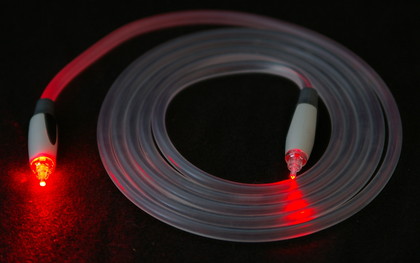5 technologies to thank the 1950s for
3. The first mass-produced modems
The development of the digital modem was initially driven by the demands of SAGE (Semi-Automatic Ground Environment) – the air defence system in the United States.
Used to connect terminals across various radar sites, airbases and command-and-control centres, these modems were the first to be mass produced and to use the Bell 101 dataset standard. They ran on dedicated telephone lines, sending data over the PSTN (public switched telephone network) and were very similar to the Bell 101, 110 baud modems.
AT&T's Bell Labs was instrumental in the creation of the precursor to the modern modem and launched the Bell 103 in 1962 – the first modem with full-duplex transmission and a speed of 300 bauds.
The modem has evolved rapidly over the past five decades reaching a point where our grandchildren probably won't even know what a dial-up modem is...

FIRST MODEM: Suddenly your old 56k dial-up modem doesn't seem so ancient any more [Image:AT&T Archives and History Center]
4. Inventing optical fibre
Sign up for breaking news, reviews, opinion, top tech deals, and more.
The concept of fibre optics was first conceived of by Daniel Colladon and Jacques Babinet in the 1840s when they demonstrated light flowing along fountains of water (see image).
However, it was in the 1950s, over 100 years later, when fibre optics underwent a surge in development. Physicists Narinder Singh Kapany and Harold H Hopkins from the UK and Abraham van Heel from Holland simultaneously announced the creation of imaging bundles in 1954.
While these weren't very good, they did kick-start development. It was Kapany who coined the term fibre optics in 1956 but it was van Heel who discovered that, by covering the bare fibre/glass/plastic with a transparent cladding, contamination and crosstalk were greatly reduced.
Then, in the late 1950s, Lawrence Curtiss improved on this even further by introducing glass clad fibres. The invention of the laser in 1960 heralded steady advancement in fibre optic communications, with the semiconductor laser, developed in 1962, still being the most widely used today.

THEN: In this illustration by Daniel Colladon, water emerges from a short spout and falls through the open air in a fountain, with the device on the left directing a beam of light into the water tank and creating a light fountain

NOW: A modern TOSLINK fibre optic cable with a laser shone into one end producing light out of the other [Image: Hustvedt]
5. The first credit card
So you have the personal computer, the modem, the sparkly optical fibre that makes your communications fly and the microchip that changed the world.
How can you afford them? Why not splash out on the very first credit card. The Diners Club card was first to market but as it was exclusively for restaurant dining and expected full payment each month it wasn't quite the real thing.
So American Express' first in 1958 takes the title. American Express' clever new toy offered you the staggered payments and free-range shopping we know today. Compare this pictured piece of paper with the laminated, inked, embossed and magnetically coded cards of today...

FIRST CREDIT CARD: The difference that 50 years and a lot less trust can make [Image: Credit Card Forum]
- 1
- 2
Current page: Modems, optical fibre and credit cards
Prev Page Microchips and stored program computers